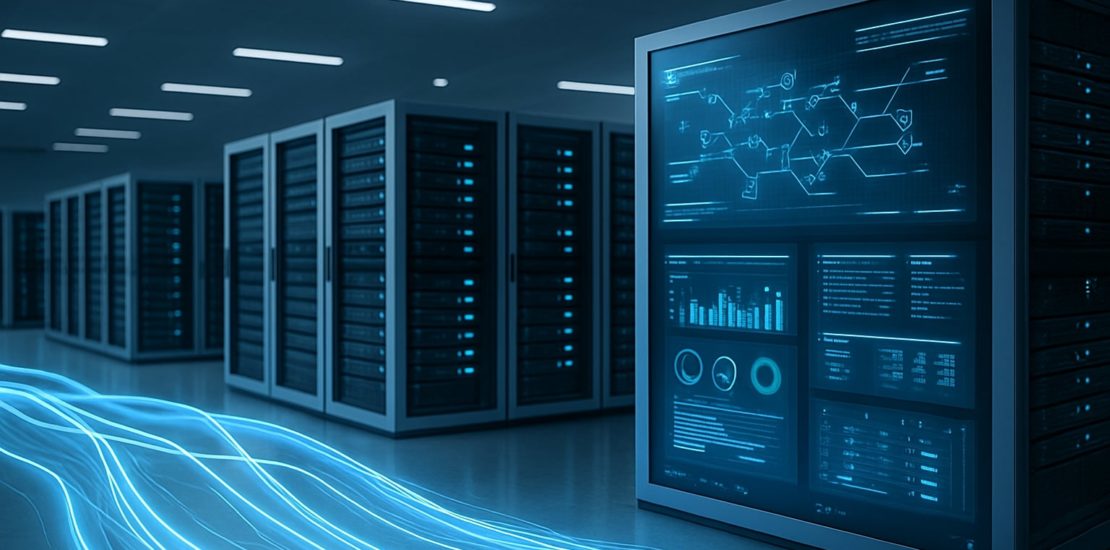How IT Infrastructure Is Changing in 2025: What Every Business Should Know
- May 15, 2025
- Posted by: Gradeon
- Categories: Digital Services, IT Infrastructure

Technology is moving fast. Businesses in the UK are facing big changes, especially in how they manage their IT infrastructure. If your company relies on computers, networks, or the cloud (and most do), it’s time to pay attention.
In this post, we’ll explain how IT infrastructure is evolving in 2025. We’ll keep it simple, clear, and helpful—so even if you’re not a tech expert, you’ll understand what matters and why.
What Is IT Infrastructure?
Before we dive into the trends, let’s start with the basics.
IT infrastructure is the set of tools, systems, and services that help your business run its digital operations. This includes:
- Hardware (like servers, computers, and routers)
- Software (like operating systems and management tools)
- Networks (internet connections, VPNs, etc.)
- Data storage (cloud or on-premise)
- Security systems (firewalls, antivirus, etc.)
Everything you do online—sending emails, accessing files, or serving your customers—depends on your IT infrastructure.
Why Is IT Infrastructure Evolving?
Business needs are changing. People want faster access to services. Teams want to work from anywhere. And customers expect seamless online experiences.
On top of that, there’s pressure to be more secure, more eco-friendly, and more cost-effective.
To meet these demands, businesses are now turning to modern IT infrastructure solutions that are smarter, flexible, and future-ready.
Let’s look at what’s changing in 2025.
1. Cloud-First Is the New Normal
In 2025, most UK businesses are moving away from traditional on-site servers. Instead, they’re using cloud-based systems to store data, run apps, and manage day-to-day work.
Why it matters:
- Less hardware to maintain
- Easy access from anywhere
- Faster scaling as your business grows
What to do:
If you haven’t started using cloud solutions, now is the time. Start small—like cloud storage or collaboration tools—and grow from there.
2. Edge Computing Gains Ground
Edge computing is another growing trend. Instead of sending all your data to the cloud, edge computing processes some of it closer to where it’s created—like in a local device or branch office.
Why it matters:
- Reduces delays (latency)
- Supports fast decision-making
- Great for industries like retail, healthcare, and logistics
What to do:
Ask your IT team if edge computing can help in areas where speed and local data handling are important.
3. AI and Automation Are Taking Over Routine Tasks
AI is not just a buzzword anymore. In 2025, it’s helping businesses manage their IT infrastructure better. Automated systems can now:
- Detect network problems early
- Adjust resources during peak hours
- Block cyber threats before they spread
Why it matters:
- Saves time
- Cuts down on human error
- Improves efficiency
What to do:
Start with simple automation tools, like system alerts or auto backups. Then move to more advanced options over time.
4. Cybersecurity Becomes Built-In
With cyberattacks on the rise, companies can no longer treat security as an afterthought. In 2025, security is baked into every layer of IT infrastructure.
What’s new:
- Zero-trust models (everyone must verify their identity)
- Multi-factor authentication
- Real-time threat monitoring
What to do:
Review your current security practices. Talk to your IT provider about strengthening firewalls, access control, and employee training.
5. Hybrid Work Is Driving Infrastructure Decisions
Remote and hybrid work are here to stay. That means your IT systems must support secure, flexible, and reliable access from multiple locations.
Key shifts:
- VPNs and virtual desktops are more common
- Video conferencing tools must be smooth and secure
- Cloud collaboration is essential
What to do:
Make sure your team has secure devices, good internet, and tools that let them work from anywhere without delay.
6. Green IT Is on the Rise
Sustainability is a growing concern. Businesses now want IT systems that are energy-efficient and have a lower carbon footprint.
How it helps:
- Cuts energy bills
- Supports ESG (Environmental, Social, Governance) goals
- Appeals to eco-conscious clients and partners
What to do:
Switch to cloud services with green data centres. Replace old hardware with energy-efficient models.
7. IT Support Is Becoming More Strategic
In the past, IT support was about fixing what was broken. Today, it’s about planning ahead and helping your business grow.
IT partners are now offering guidance on:
- Long-term tech strategy
- Risk management
- Compliance with UK regulations
What to do:
Look for IT partners who offer more than just tech support. They should understand your industry and help shape your digital future.
Conclusion: What Should Your Business Do Next?
2025 is bringing big shifts in how IT infrastructure is managed. Whether you’re a small business or a large enterprise, you’ll need to adapt.
Here’s how you can get started:
- Review your current systems and spot areas that need improvement
- Focus on cloud, security, and flexible work solutions
- Plan for the long term with a partner who understands modern IT needs
If you’re based in the UK and looking for expert help, there are many providers of IT infrastructure services London businesses can trust. The key is to choose someone who delivers not just tools—but solutions that align with your goals.
